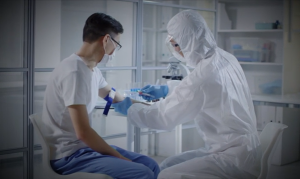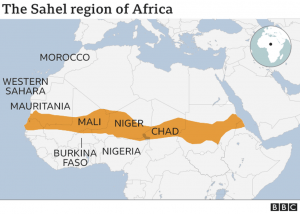FERGUSON, United States. The anniversary of 18-year-old Michael Brown’s death in Ferguson, Missouri, began with a solemn march in his honour and ended with a rowdy protest that was interrupted by gunfire.
Shots rang out as several hundred people gathered on West Florissant Street.
St Louis County Police Chief Jon Belmar said a man who opened fire on officers in Ferguson, Missouri, is in “critical, unstable” condition after being struck when the officers returned fire.
Belmar said that plainclothes officers had been tracking the man, who they believed was armed, during the protest.
He said the man approached the officers, who were in an unmarked police car and opened fire. The officers returned fire from inside the vehicle. They then pursued the man on foot.
Belmar said the man again fired on the officers and all four fired back.
The man, who wasn’t immediately identified, was taken to a hospital, where Belmar said he was in surgery.
Minutes after the shots were heard, an AP photographer saw a man lying face down, covered in blood, behind a boarded-up restaurant. Later, an AP reporter saw a woman overcome with grief. Friends were consoling her. She screamed: “Why did they do it?” Another woman nearby fainted.
A man nearby said, “They killed my brother.”
Several events earlier marked the anniversary of the killing that cast greater scrutiny on how police interact with black communities.
Brown’s father, Michael Brown snr, led a march through town after a crowd of hundreds observed 4 minutes of silence, beginning at 12.02pm local time, the time Brown was killed. The length of time symbolised the 4 hours his body lay in the street after he was killed. Two doves were released at the end.
The elder Brown held hands with others to lead the march, which started at the site where his son, who was black and unarmed, was fatally shot by Ferguson officer Darren Wilson last year. A grand jury and the US Department of Justice declined to prosecute Wilson, who resigned in November, but the shooting ignited a national “Black Lives Matter” movement.
Pausing at a permanent memorial to his son, Brown said, “Miss you.” He had thanked supporters before the march for not allowing his son’s death to be “swept under the carpet”.
Later, a few hundred people turned out for a church service to remember Brown.
The anniversary has sparked days of renewed protests, though until yesterday they had been peaceful.
Before the shots were fired, protesters were blocking traffic and confronting police. One person threw a glass bottle at officers but missed.
For the first time in three consecutive nights of protests, some officers were dressed in riot gear.
Organisers of some of the weekend activities pledged a day of civil disobedience today.
Earlier, at the march, some wore T-shirts with likenesses of Brown or messages such as “Please stop killing us” or “Hands up! Don’t shoot!” which became a rallying cry during the sometimes-violent protests that followed the shooting a year ago.
But the focus of the weekend has largely been on Brown, who left high school weeks before the shooting and planned to become a heating and air conditioning technician.
Relatives and friends described him as a quiet, gentle giant who was eager to start technical college. But police said Brown stole items from a convenience store and shoved the owner. Moments later, he and a friend were walking on Canfield Drive when Wilson, who is white, told them to move to the pavement.
That led to a confrontation inside Wilson’s police car. It spilled outside, and Wilson claimed Brown came at him menacingly, leading to the shooting. Some witnesses claimed Brown had his hands up in surrender.




